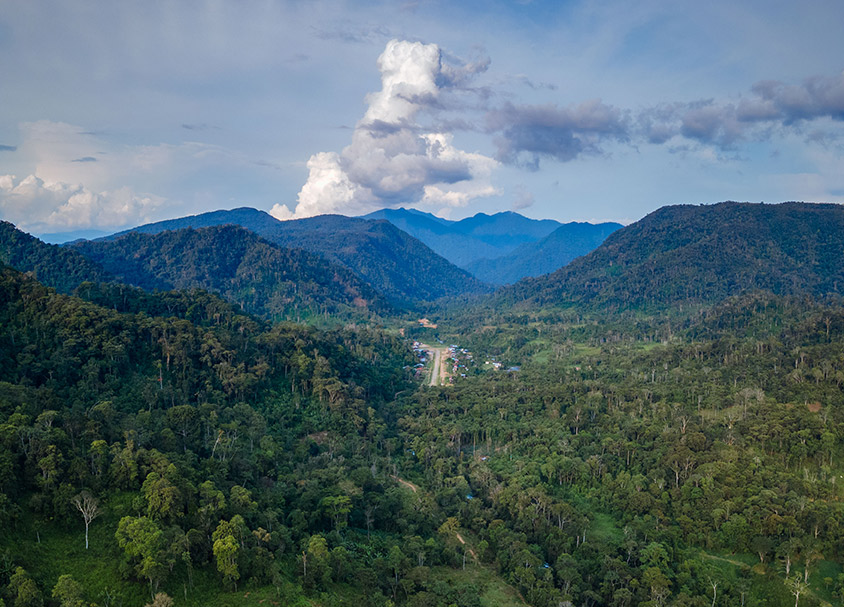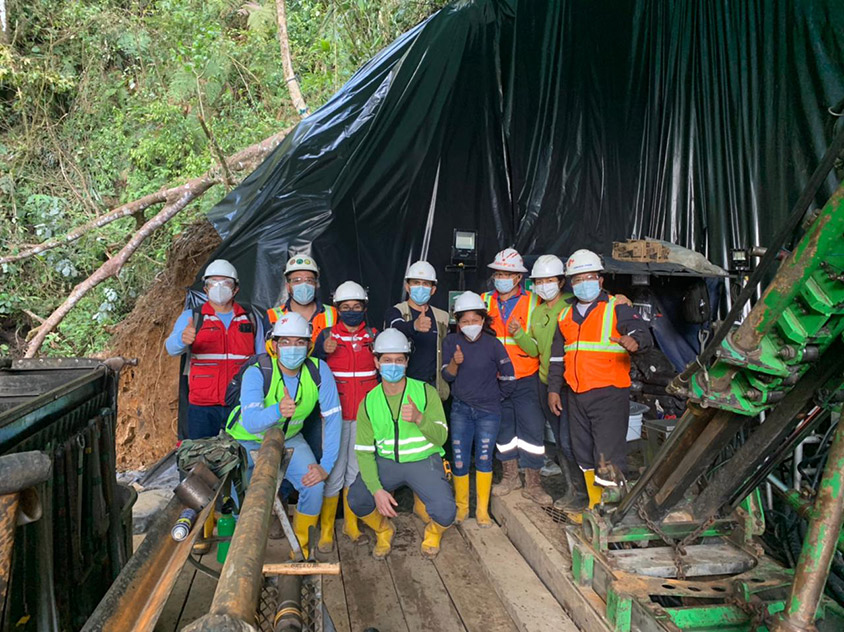JV Article: New discovery at Solaris Resources’ Warintza copper project in Ecuador hints at superpit potential


Solaris Resources has made a major new discovery within its Warintza copper project in Southeast Ecuador.
The Warintza project is situated amongst primary infrastructure adjacent to the national highway that runs north-south along the mineral belt that also hosts Lundin Gold's Fruta del Norte and a Chinese consortium’s Mirador mines, 40 kilometres to the south.
"All told, this belt is estimated to host tens of millions of tonnes of contained copper and millions of ounces of gold," said Solaris CEO Daniel Earle.
During the first quarter, Solaris doubled its resource growth and discovery drill campaign at Warintza from six rigs to 12, as a major discovery at Warintza West and geophysics revealed a much more extensive porphyry system than previously understood.
“It's a much larger, more extensive system than surface geochemistry and mapping implied,” Earle said at the time.
This week’s latest discovery is at Warintza East, marking the third major copper discovery on the Warintza property within a set of five main targets within the 7km x 5km cluster of porphyries defined on the property. Discovery drilling runs alongside resource expansion drilling at Warintza Central, where an updated resource estimate is expected in Q4 2021.
“With this discovery at Warintza East, the Central pit shell will be extended out to the east, and we may ultimately have one multi-kilometre ‘superpit’ joining the two deposits,” Earle said.
The existing inferred resource at Warinzta Central — 124 million tonnes grading 0.7% copper equivalent (CuEq) is based on very limited, shallow historical drilling from 20 years ago, whereas the 2021 campaign’s objective is to define an order of magnitude larger resource.
Earle said the ongoing drill campaign at Warintza Central was designed to extend drill holes to 1,000-metre depths, representing a massive extension from historical drilling averaging 200 metres depth, and then expanding laterally one kilometre along strike.
“In broad strokes, that would define a billion-tonne resource envelope,” Earle said.
Recent drilling at Warintza Central intersected 1,029 metres of 0.73% CuEq from surface and 1,000 metres of 0.60% CuEq, including 786 metres of 0.67% CuEq from surface, extending the Warinzta Central strike length to 1,250 metres.
“We’ve already demonstrated through recent drilling that we’ve gone well beyond the planned resource drilling parameters with holes extending to mineralized depths of 1,000 - 1,300 metres and the strike length being extended to 1,250 metres.
The drilled strike length at Warintza Central has grown to the east and remains open towards Warintza East, where future drilling will focus on the open, undrilled area between Central and this new discovery at East.”
The first hole ever drilled at Warintza East, SLSE-01, was collared approximately 1,300m east of Central and was drilled to a total depth of 1,213 metres with assays reported for the first 320m of core. SLSE-01 returned 320m of 0.46% CuEq from surface, including 54m of 0.70% CuEq, with the balance of the hole expected in Q3.
“We’re in good shape with respect to our strategy. Warintza East is by far the more significant discovery outside of Central,” Earle said. “Our priority, operationally, is to deliver a billion-plus tonne resource at Central, and make additional discoveries adjacent and around that — the whole area is highly prospective.
The footprint of Warintza East overlaps conceptual pit designs for Warintza Central, creating opportunity for one superpit with the highest-grade mineralization occurring at or near surface lending itself to establishing a robust mine plan with elevated grades benefitting the early years of mine life.”

Ecuador’s new, pro-mining government
Ecuador’s presidential election grabbed international headlines in April, won by Guillermo Lasso, a former banker who vowed to promote foreign investments in the mining and oil sectors, while cutting tariffs on agricultural and other heavy equipment.
“2020 to 2030 will be the decade of mining in Ecuador,” Juan Carlos Bermeo Calderón, newly-appointed Minister of Energy and Non-Renewable Natural Resources said in a recent interview with LATam Investor.
“We have the same geology as Peru and Chile and even the little exploration that has happened so far has found some massive deposits. When these are turned into mines they will be among the biggest in the world, which is why we want to attract the largest, most responsible mining companies,” Calderón said.
Social, environmental sustainability
Along with a supply of abundant fresh water, Warintza’s grid is supplied with clean, low-cost electric power and the ability to transport supplies through nearby highway access connecting to Pacific ports, transmission lines and airports. All the infrastructure is in place — a primary driver of capital costs for large-scale projects.
The project resides on the Ancestral Lands of the Shuar Nations of Warints and Yawi, and through a community social relations program, central to the company’s overall ESG framework, Solaris was able to reach an agreement with the indigenous community.
Solaris and the Shuar Nations signed a memorandum of understanding in 2019 and completed an Impacts and Benefits Agreement in 2020 which governs the relationship between a resource developer and the traditional owners of the lands.
“I want to acknowledge the efforts made by Solaris aimed at responsible management,” Juan León Pilco, Former Governor, Morona Santiago, Ecuador, said in a public statement.
“Solaris has carried out all activities in a socially and environmentally responsible way, generating employment for citizens respectful of labour rights and regulations,” Pilco said.
Solaris plans to produce a Preliminary Economic Assessment in early 2022.
The preceding Joint-Venture Article is PROMOTED CONTENT sponsored by Solaris Resources, and produced in cooperation with www.CanadianMiningJournal.com. Visit https://www.solarisresources.com/ for more information.
Comments